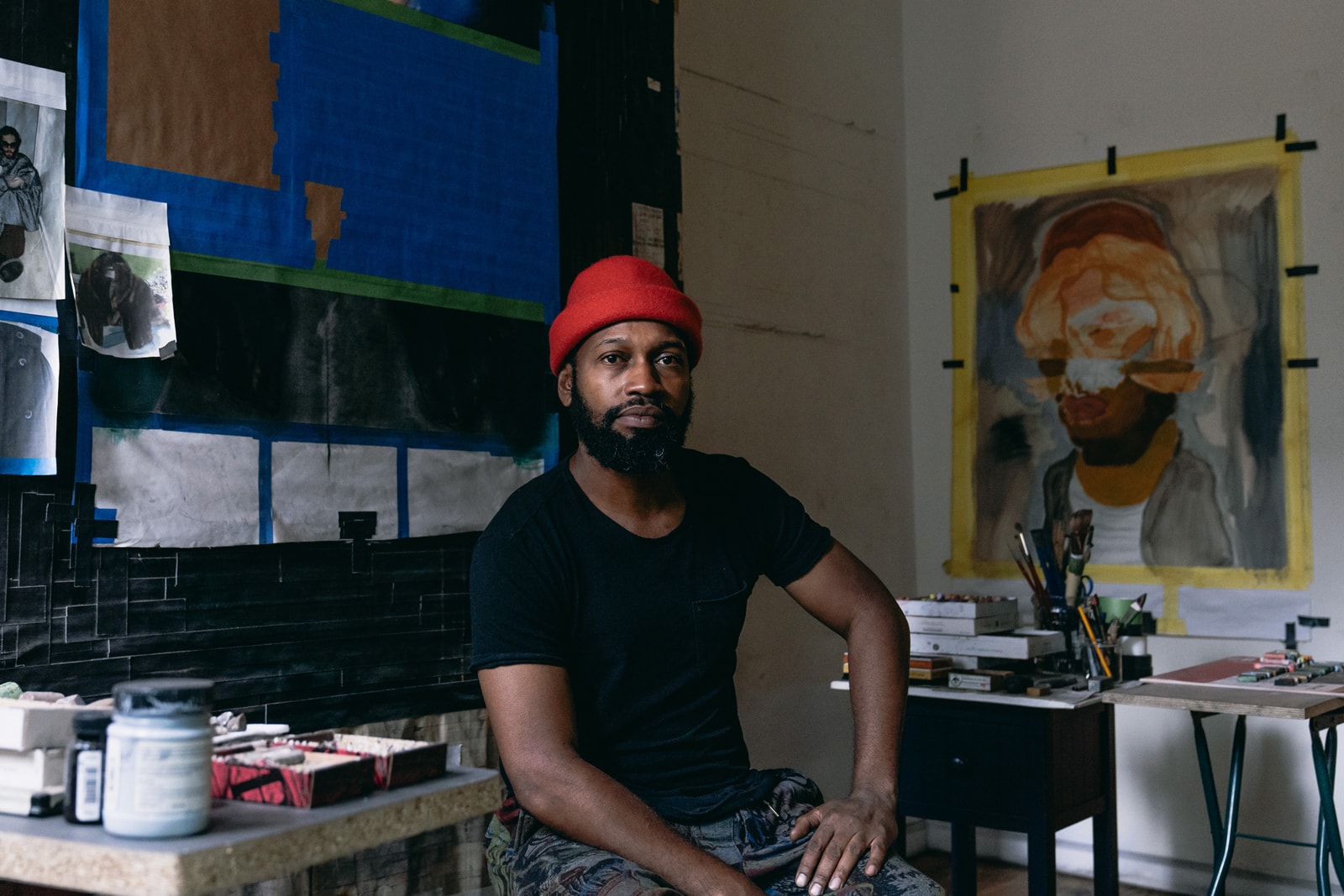

Nathaniel Mary Quinn highlights identity, memories, and perspectives in the subject matter of his paintings. While he may not be entirely sure of the characters he’s creating in the process, this intuitive approach is what drives the Chicago-born artist’s signature practice of making fragmented portraits. In some cases, Quinn is shocked to find out that a finished piece eerily resembles a close family member or a long-forgotten friend.
“I surprise myself with the subjects I paint, especially when they turn out to be childhood friends. I’m like ‘Oh snap, that’s Kenwood.’ He’s a gangbanger and I’ve never talked to that motherf–ker since I was 15-years-old,” he says. “With my work, you need to be present and in the moment to make one of my pieces. It’s a visceral process where you got to feel your way through the process.
Quinn paints composite faces that channel the emotion-charged imagery of Lucian Freud while gleaning hard-edged tendencies from the cubist works of Pablo Picasso. And while his creations appear to be collages, they’re actually made using gouache, charcoal, and pastel from visuals he finds online or in vintage fashion magazines. These archival materials combined with the countless hours applying them on canvas result in dynamic compositions that show the depth of humanity he attempts to evoke within each painting.
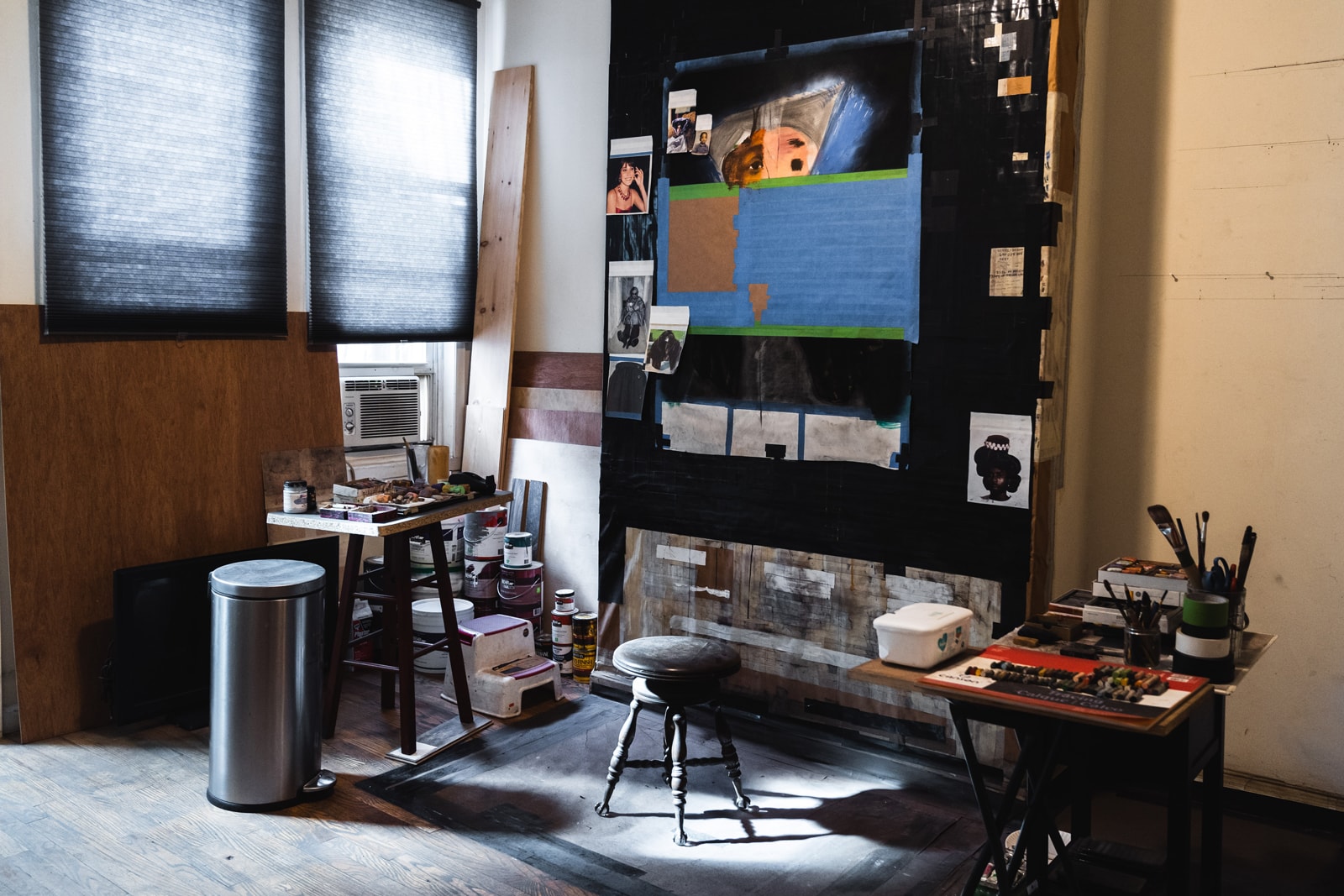
The 42-year-old artist’s personal experiences strongly inform his work, enabling him to tap into complex themes such as memory, identity, and the rainbow-like spectrum of humanity. Quinn grew up with five older brothers in a rough housing project located in the South Side of Chicago. He attended boarding school in Indiana at the age of 15-years-old, and at that time, he received the news that his mother had passed away. He decided to move back to Chicago but was heartbroken after finding out that his father and brothers left him. To cope with these terrible tidings, Quinn focused on creating art. The aspiring artist went on to get his masters in fine art at New York University and then he spent a number of years teaching underprivileged youth. In 2015, he made being a fine artist a full-time career.
Although he’s a fresh signee to globally-renowned dealer Gagosian, Quinn is deeply embedded within the fine art circuit. He’s also represented by Rhona Hoffman in Chicago, and Parisian gallerist Almine Rech who have displayed his works at their international locations. His progressive work has attracted hundreds of international collectors including celebrities Anderson Cooper, Elton John, and Carmelo Anthony.
We sat down with the high-spirited artist to discuss his first Gagosian show “Hollow and Cut” in Beverly Hills, the perception of his identity, creative processes, and next steps. Read the full interview below.
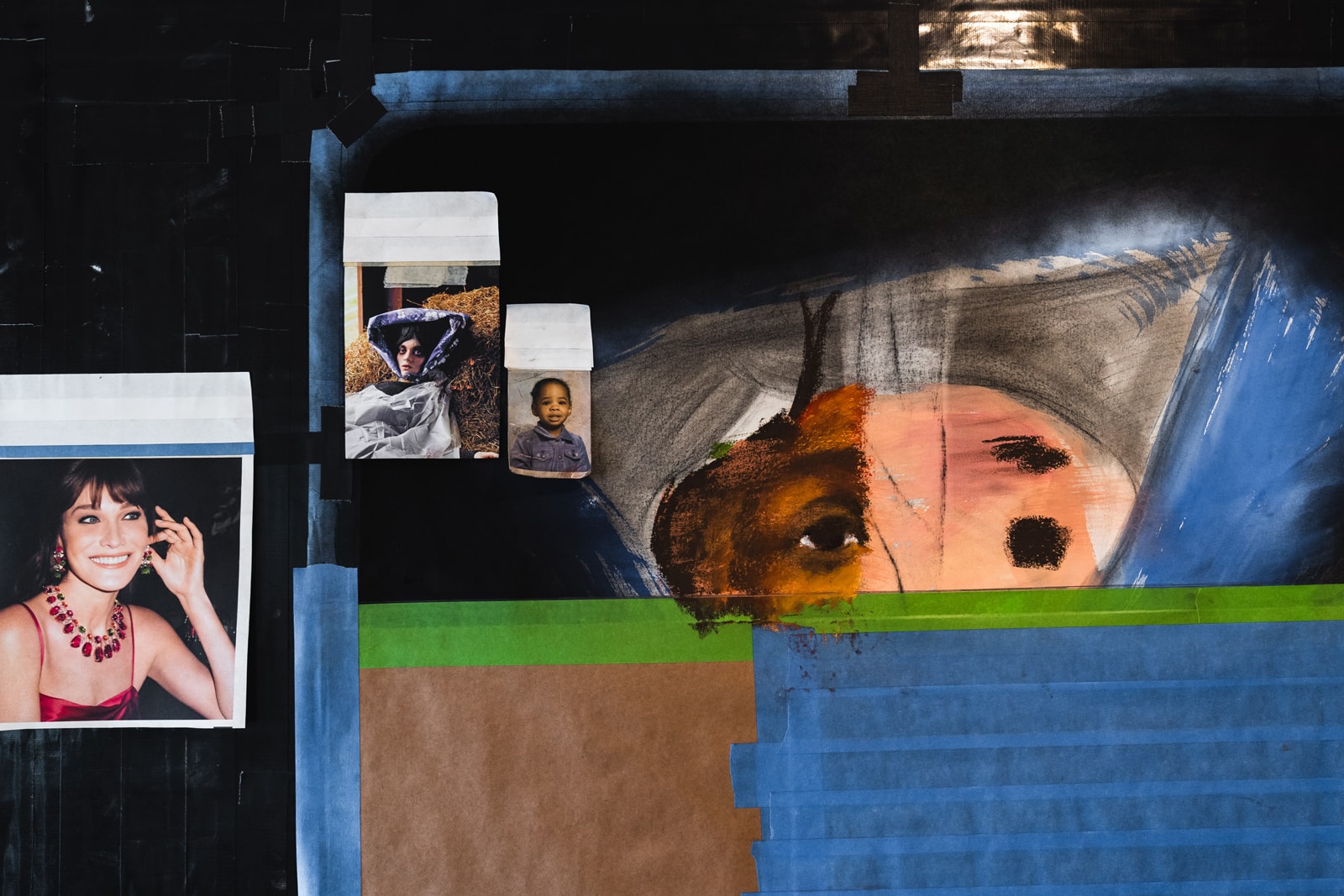
HYPEBEAST: How was your first show at Gagosian?
Nathaniel Mary Quinn: I tell you what, it exceeded my expectations. I was not expecting the turnout that took place at the opening man, I was blown away. In fact, it was so big for me. I don’t know about the past artists, but for me, it was so big that a part of me felt undeserving of it.
How so?
You know what man, all I really care about is making the best works that I can make. That’s all I care about. I don’t do it for any kind of praise. At the very least, I hope people will kind of like what I do. I think if you’re an artist and you’re putting your works in a public space, you will be lying to yourself if you say you don’t care that people like it. I think that’s nonsense. But, I don’t do it for any kind of massive fame.
So, for you, it was a different kind of energy?
Oh man it was tons of energy. The gallery said that 700 people came to the opening. I’ve never had 700 people come to any of my shows, man. Let me tell you this, you have a hard time getting 700 people to agree on peace and order. It was packed. I’ve never experienced anything like that. It was crazy.
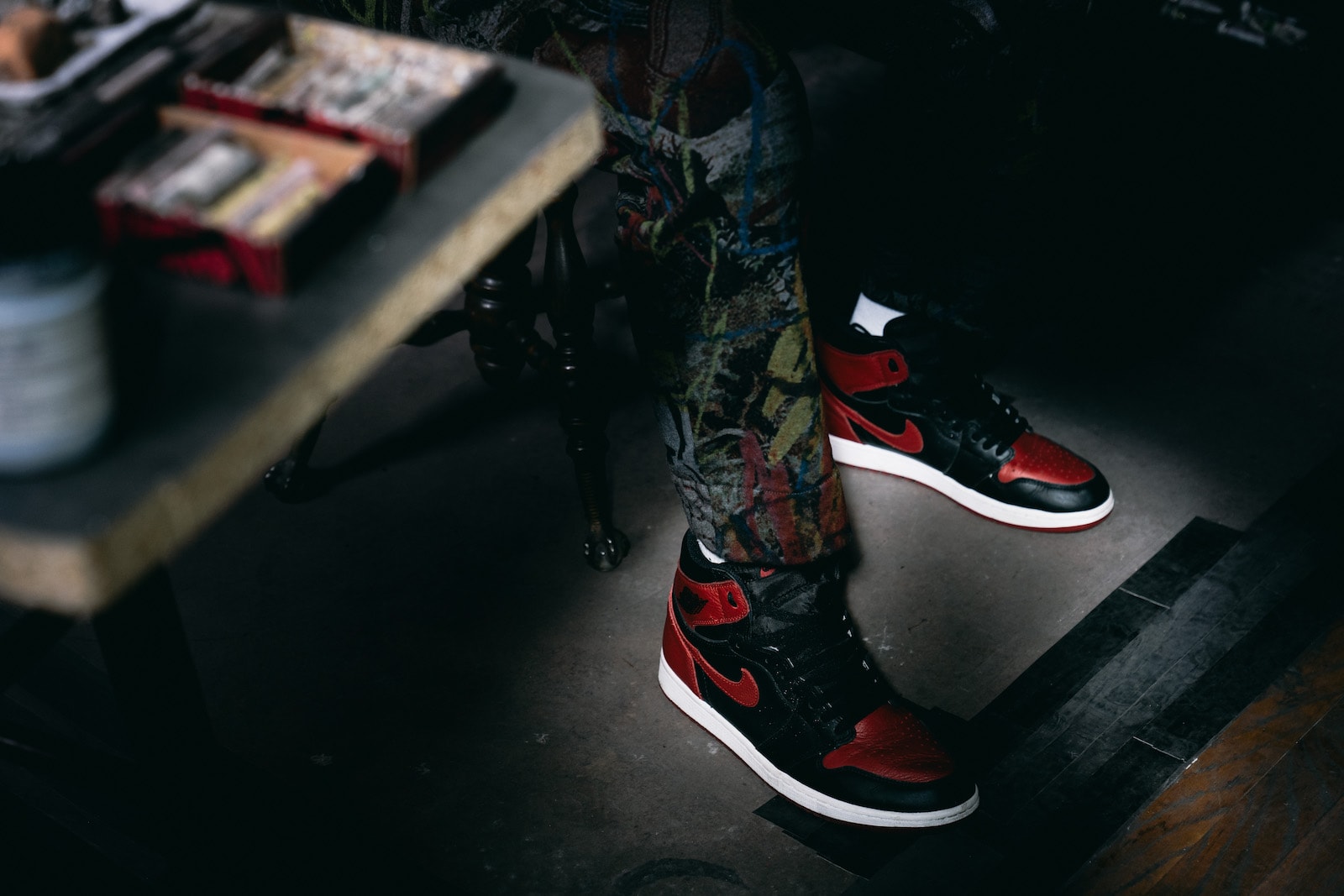
Tell us about one of your favorite pieces in the show.
It was a 60-by-44-inch-wide painting called ‘Above and Below.’ I had a vision of painting this figure of a woman wearing a fur coat, black pants, and shiny shoes. There’s a face, of course. The figure is standing on this gravel and the background is split into three different sections. On top is a light blue background, but the bottom is brownish.
That work is about my mother and it’s called ‘Above and Below’ because I feel like my mom is always with me. Although she’s not with me. She’s in heaven now. So she’s always ‘Above and Below,’ that’s the genesis of that work right there.
“All I wanted to do was peel off the veneer of myself and create works that highlight the depth of my humanity and identity.”
What were the inspirations behind “Hollow & Cut”?
The inspiration was simple. All I wanted to do was peel off the veneer of myself and create works that highlight the depth of my humanity and identity. Basically, I wanted to make works that confront everyday things that I deal with, whether it’s my insecurities, doubts, fears, my sense of shortcomings, not feeling worthy of great things in life. That was really the driving force. I’ve never done a show like that.
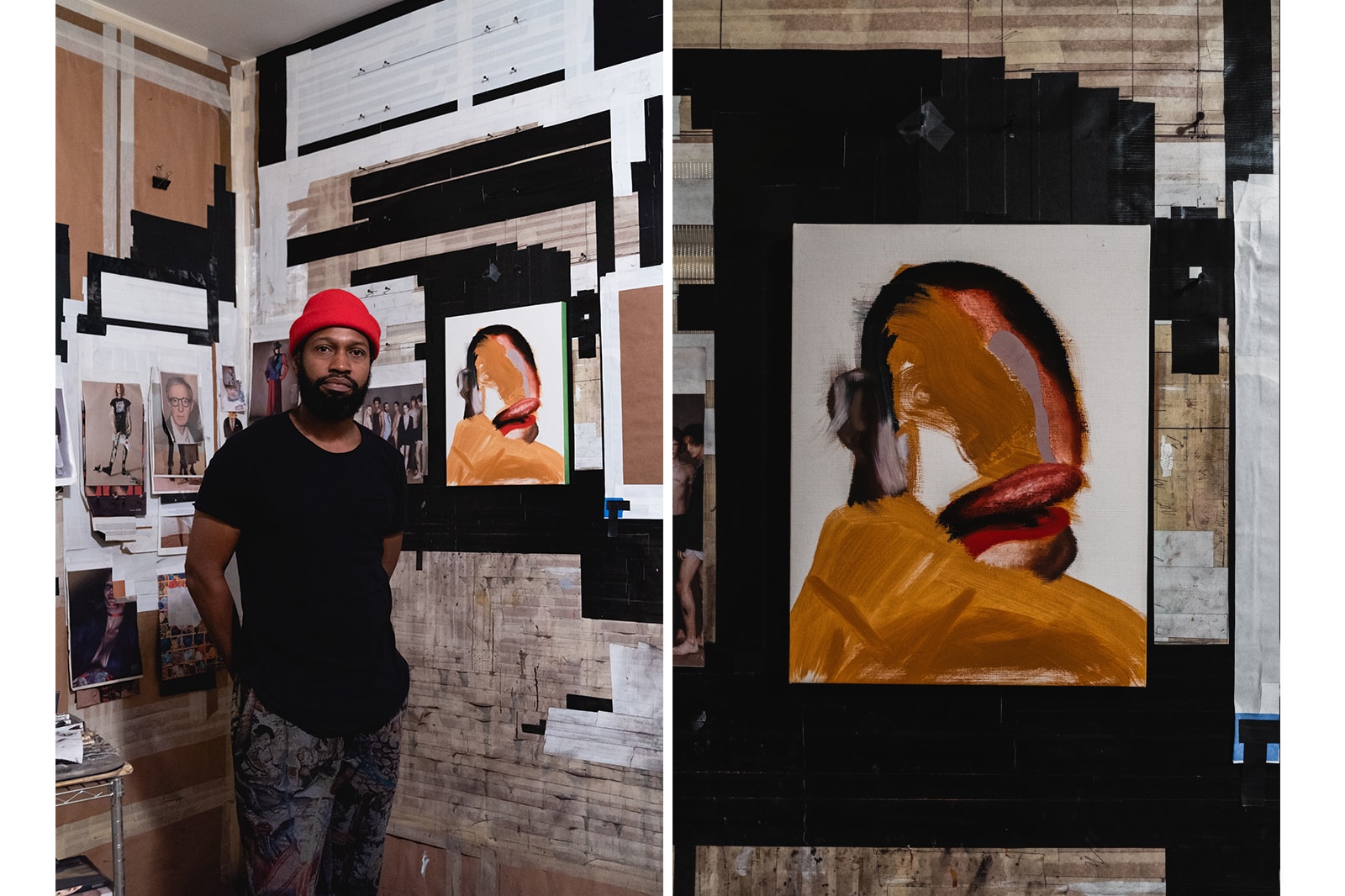
Would you say they’re self-portraits in an essence?
Well, they’re not really self-portraits. Traditionally, what that means is that you are making a work that is a reflection of one’s physical self. I would say these are portraits of various aspects of my essence or memories that continue to stick with me. I wouldn’t call them self-portraits.
So, it’s more of a reflection of your personal experiences?
Yeah, that’s it! Reflections. For me it was like asking myself, ‘How do you paint insecurity?’ and ‘What does that look like?’ or better yet ‘What does that feel like?’ As I’m working through this process, I try to find ways to tap into that. Through any matter of technical virtuosity, I’m trying to broadcast that on the surface or canvas or on paper.
Have you always explored this concept of “reflections”?
Yeah man, right before I became a full-time artist, my first gallery show was at Pace Gallery in London, I’ve gone through therapy for four years. I was engaged in this journey with dealing with some issues. And you know, putting all of it on the table. I find it very intriguing and I said this is some sh-t I want to do in my practice because it felt very human to me. I also try to challenge notions of “Blackness” being a Black man making art in America, I wanted to challenge all of that.
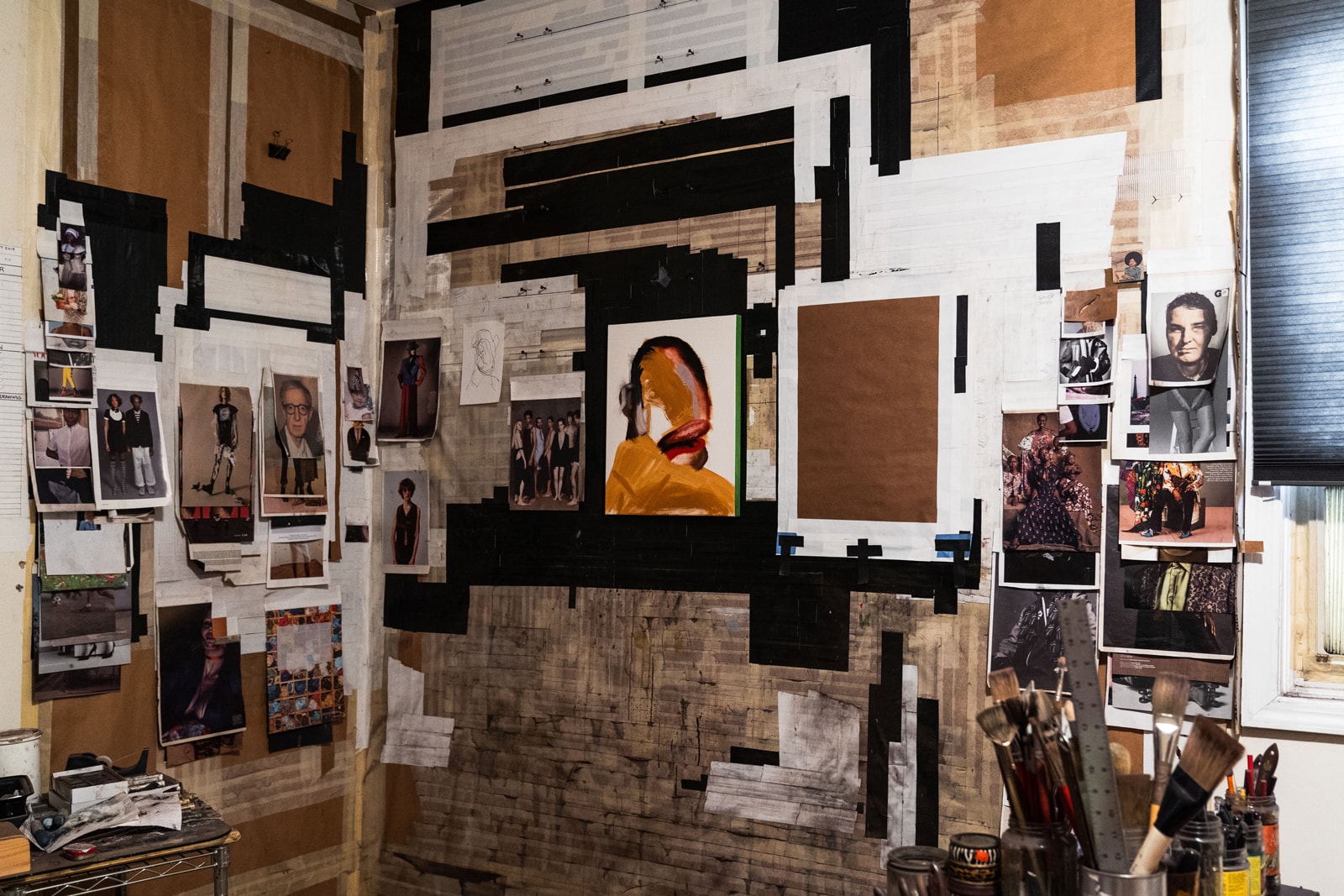
Do you ever feel like, as a Black artist, you’re kind of pigeonholed to talk about “Blackness”?
Of course, I’m proud to be Black. However, “Blackness” is not really a concept that I don’t think most Black people typically embrace. Black folks fought for the right to be respected based on the basis of their humanity. And humanity is another way of saying “imagination” or “innovation” or “creativity” things like that. I figure, man I’m living this life and I want to be it. I don’t want to talk about it. I want to be that shit. So that way, everybody can see my work and they see a reflection of themselves.
“Throughout American history, Black people aren’t really seen as having any insecurities.”
Is there a specific piece where you’re relaying your insecurities visually?
I made a piece called ‘Pure Insecurity.’ It was a reflection of me as a very insecure person, but a lot of people feel that way. For me, I just put it on out there. Throughout American history, Black people aren’t really seen as having any insecurities. They’re seen as tough, hardcore, vicious or menacing. None of those terms have any room or any space to bring up discussions about insecurities. You don’t really think of an insecure person as being really vicious. A vicious person is, in fact, deeply insecure. I figure I would just be that you know? I like to think that my work is actually quite radical in that sense.
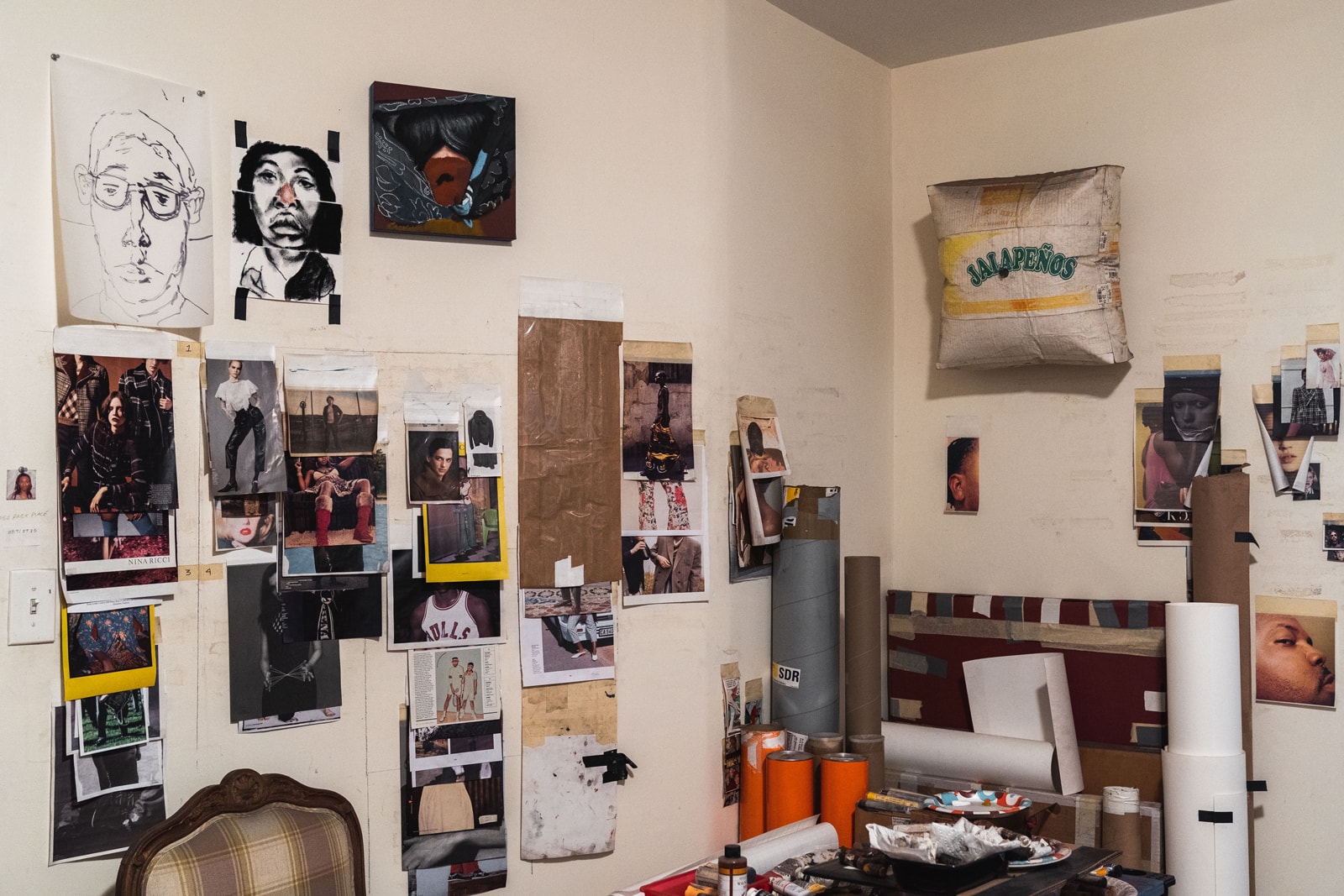
When did you want to pursue art as a career?
There was never a time in my life when I felt the burden of having to be a full-time artist. I’ve never felt that because a big part of my life was driven by survival. Once I had a job and I was no longer living in the projects and I was teaching, paying my bills and rent, I was certain that I already made it. I wasn’t a millionaire or anything but I had a good life and I was happy with that. Even if I only had 15-20 minutes to make art every day, I was happy with that. I had fantasies of being a full-time artist, but I would’ve been okay if I never got to be a full-time artist.
“I don’t think I’ll ever go into any work of art with preconceived notions because it ends up being contrived.”
How do you approach painting?
For most of my works, I don’t really know what the work is about until I finish it. I don’t think I’ll ever go into any work of art with preconceived notions because it ends up being contrived. It should be honest. You need to find ways to remove all sorts of social conditioning or belief systems when your painting.
What happens is, you find yourself making something that flows from the shores of self-consciousness. That’s the truth, although you’re not concretely aware of it. These are the things that dictate what you think and where you find yourself in the world.
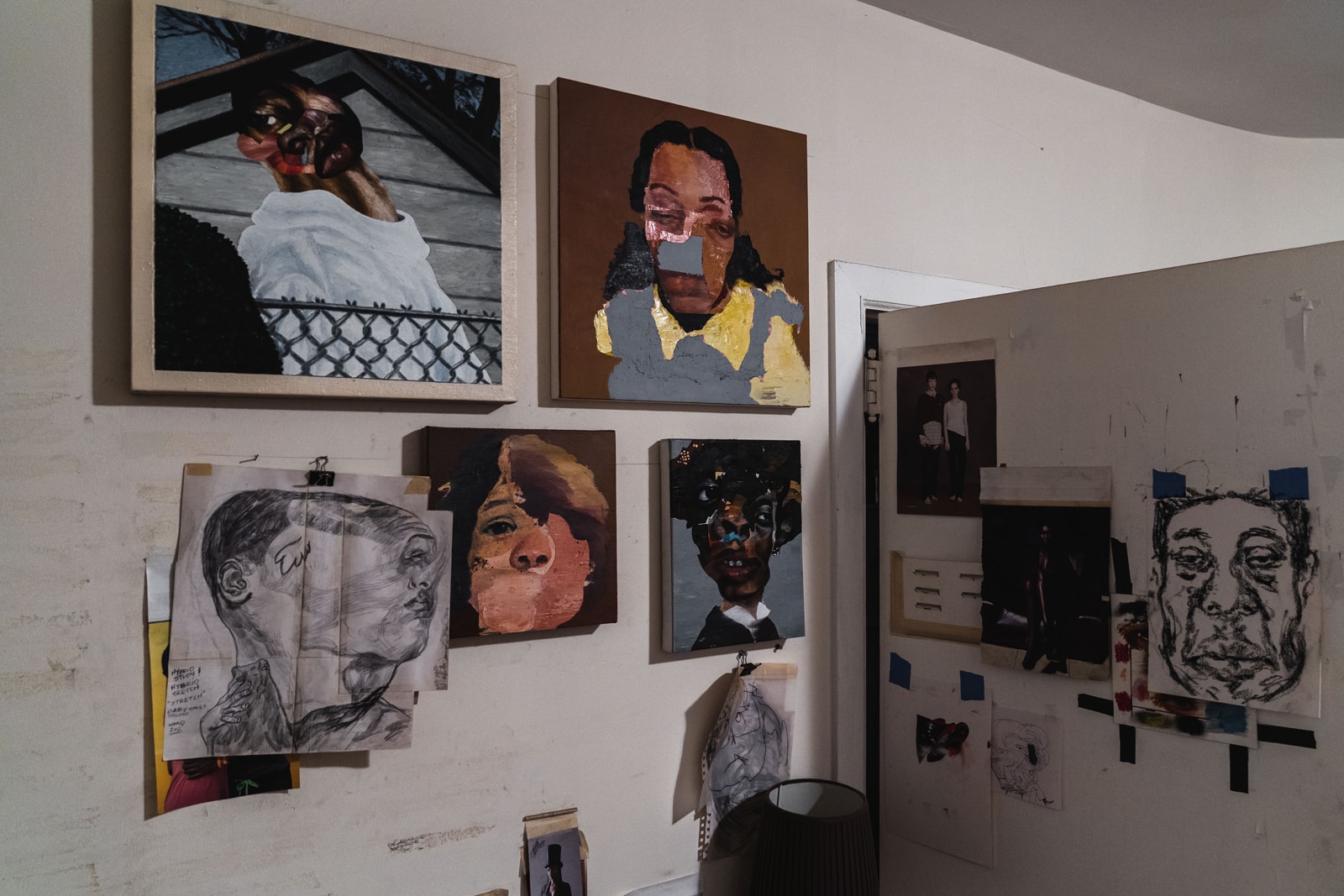
What have your finished paintings taught you about your work?
My finished works have made it clear that tremendous courage is required to explore your own vulnerability and memories. I have made works about people whom I have not thought about in years, perhaps evidence of their continued impact in my life.
My mother passed away as well and it’s definitely a heavy load.
Part of the reason why it’s such as heavy load because when you were born into the world, you would think that your mother was always here. There’s no actual concept of her actually being born into the world too, you know? That right there lodges into your mind from a kid, a baby, as a neonate. And then you grow up in the world and you presume well she was always here means she will always be here. And you just believe that concept, you just carry it with you. There’s nothing that shakes it, even when you hear your other friends saying their mom died, you’re thinking that it would never happen to you. You just don’t think that you’re going to be a recipient of this kind of loss.
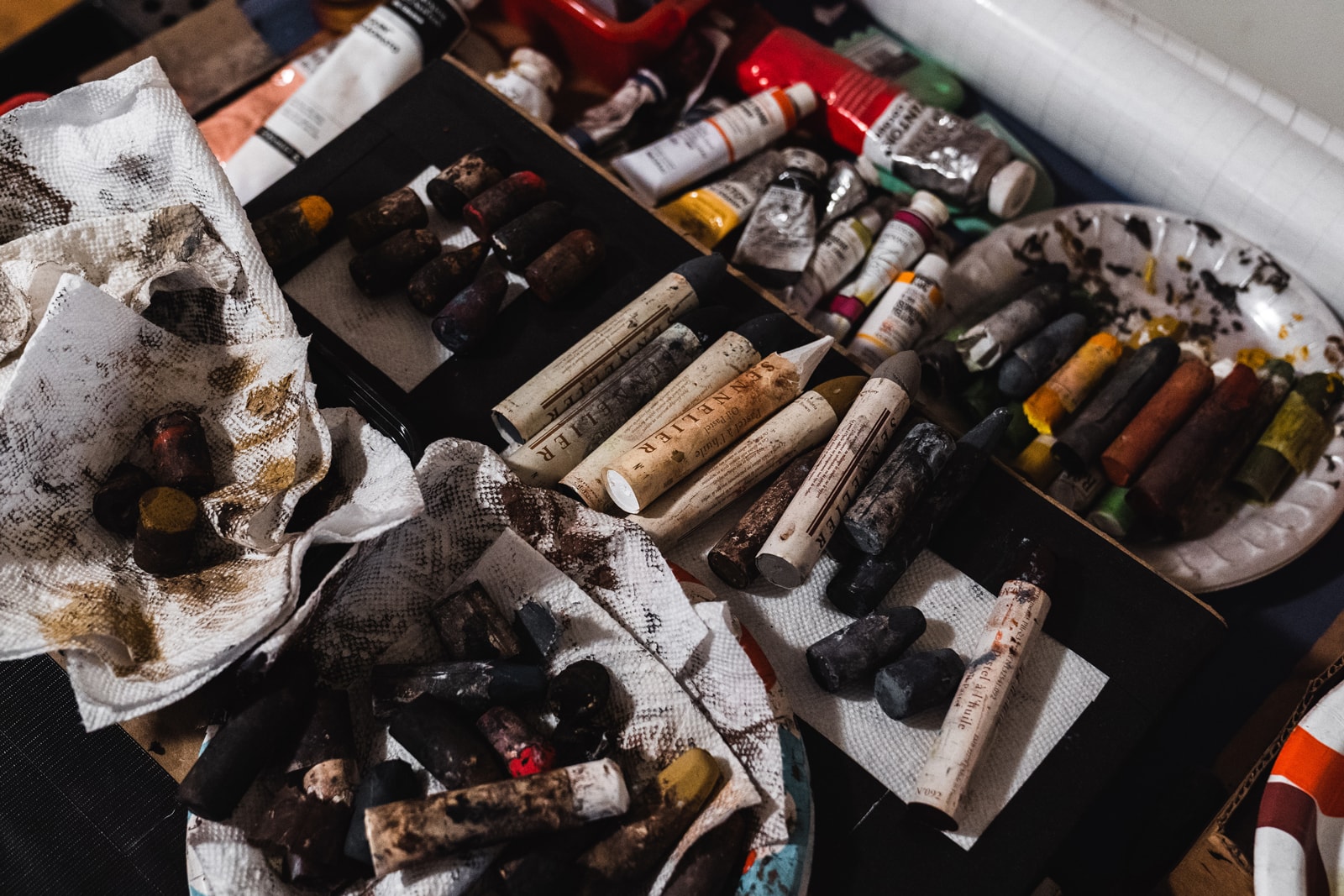
Do you see your paintings as invincible as well? Are you trying to create a legacy with your paintings?
I am creating a legacy, there’s no doubt about that. I have a lot of work in museum collections. For this show alone, I had six works from museums, you know that’s legacy building right there. Those works are going to last forever. As a result of the works in the collections, that too will last forever, because maybe collectors have children and the works will be passed down to them or they will gift the works to a museum. Right now, you see works at a museum that were painted in 1645 or something like that. It’s going to be around forever and that will impact younger artists as well.
What’s the next step for you?
Well, I think the next thing that I have coming up is my third solo show with Rhona Hoffman Gallery, that’s going to be next year in February. For now, I’m just making work in my studio and experimenting a bit with landscape paintings.
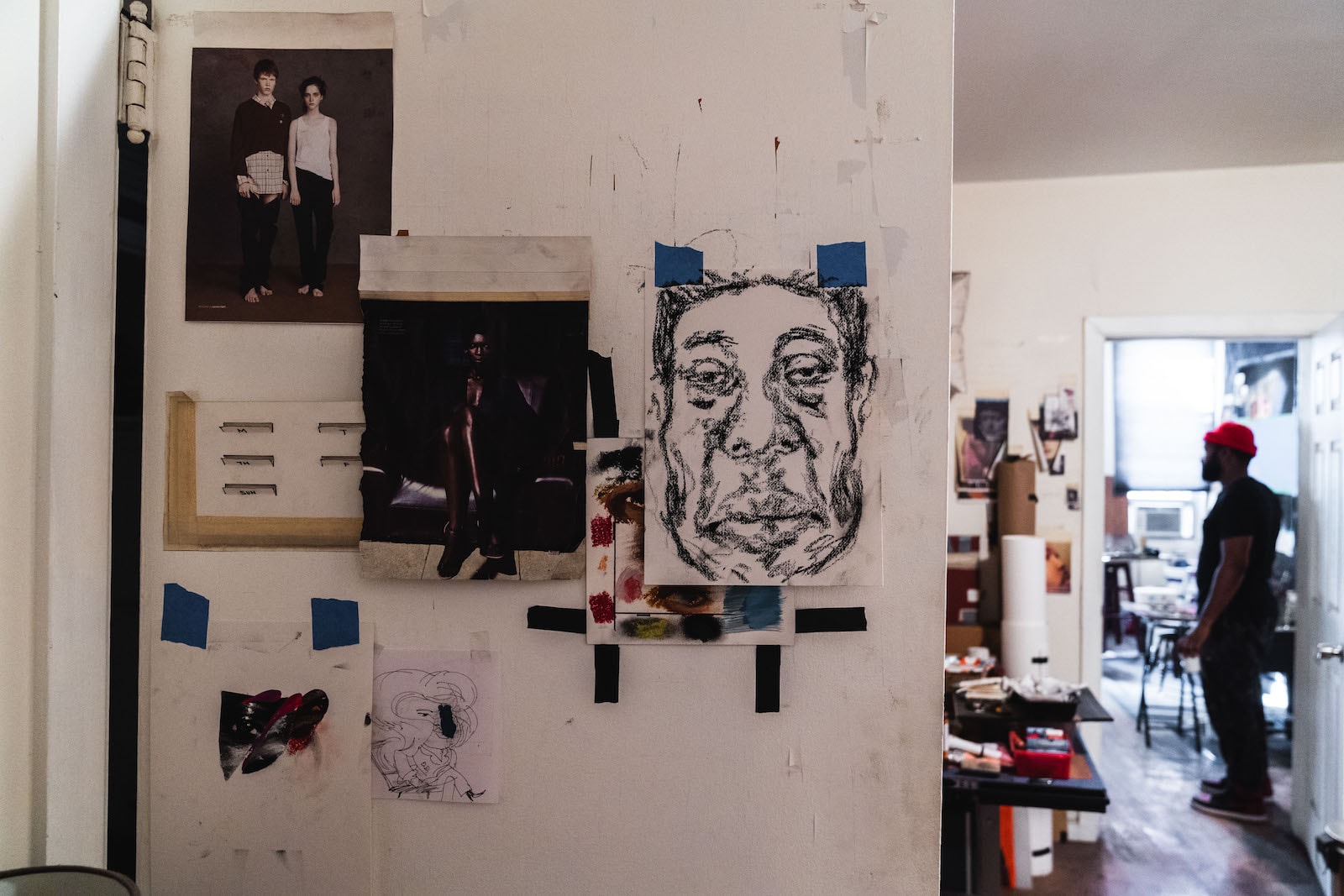

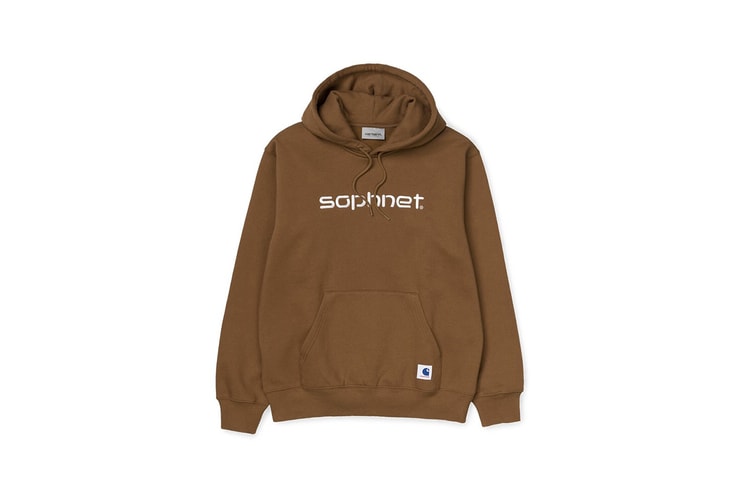
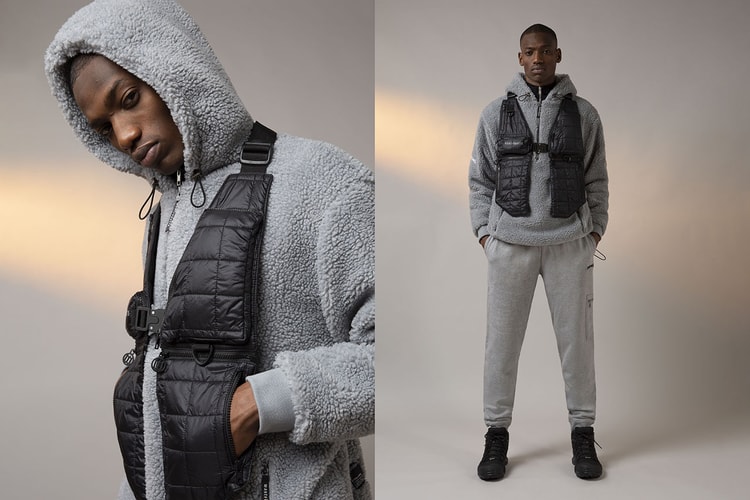

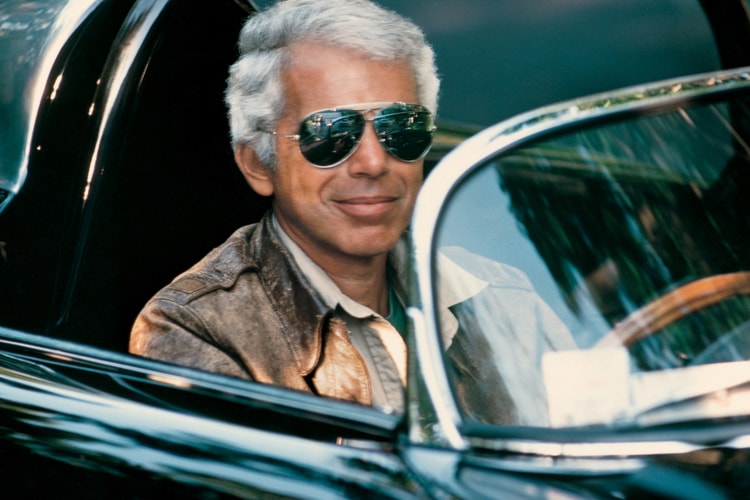
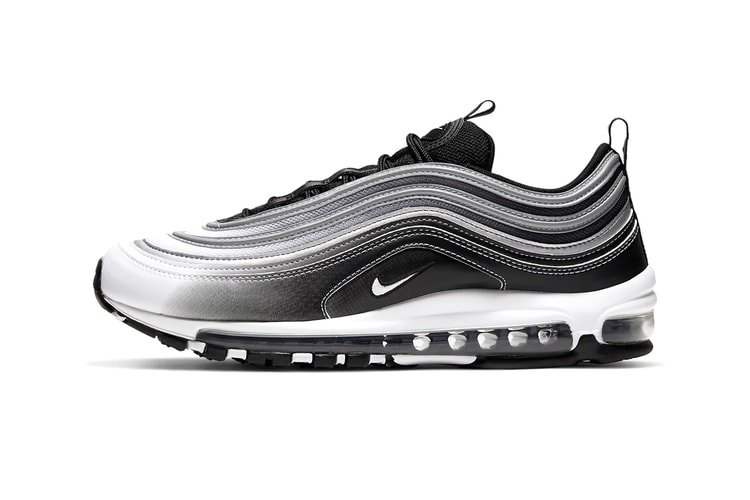



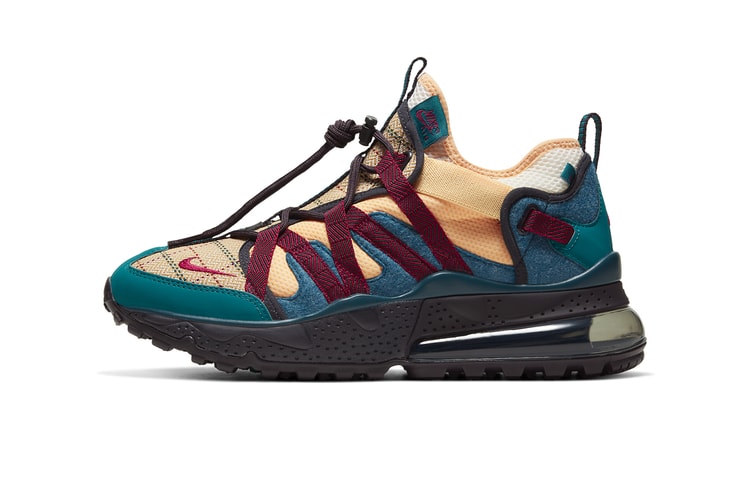
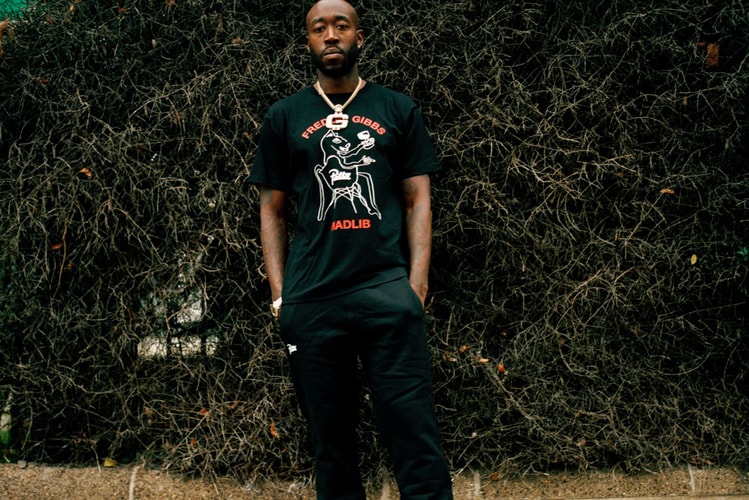
Writer
Keith Estiler/HypebeastPhotographer
Eddie Lee/HypebeastScan the QR code to open the article on your device or within the Hypebeast App.